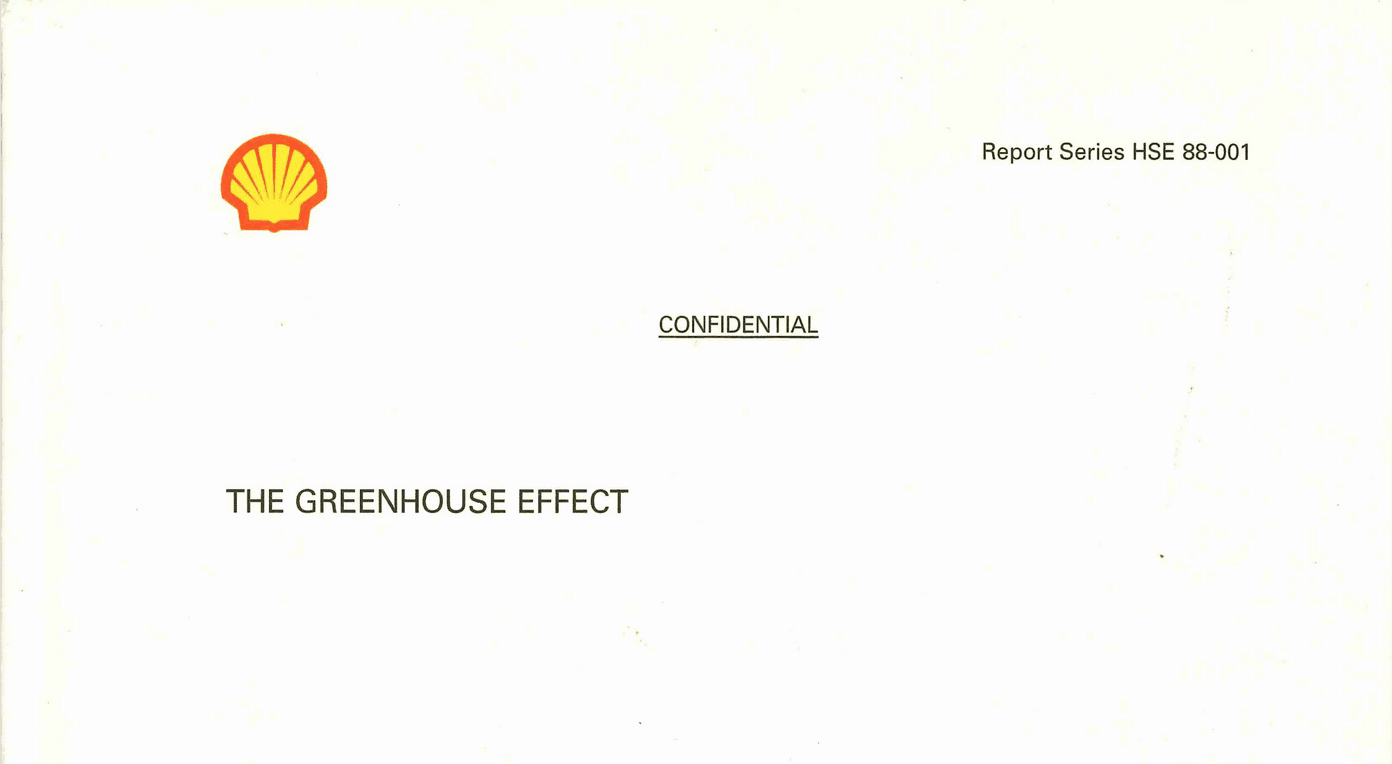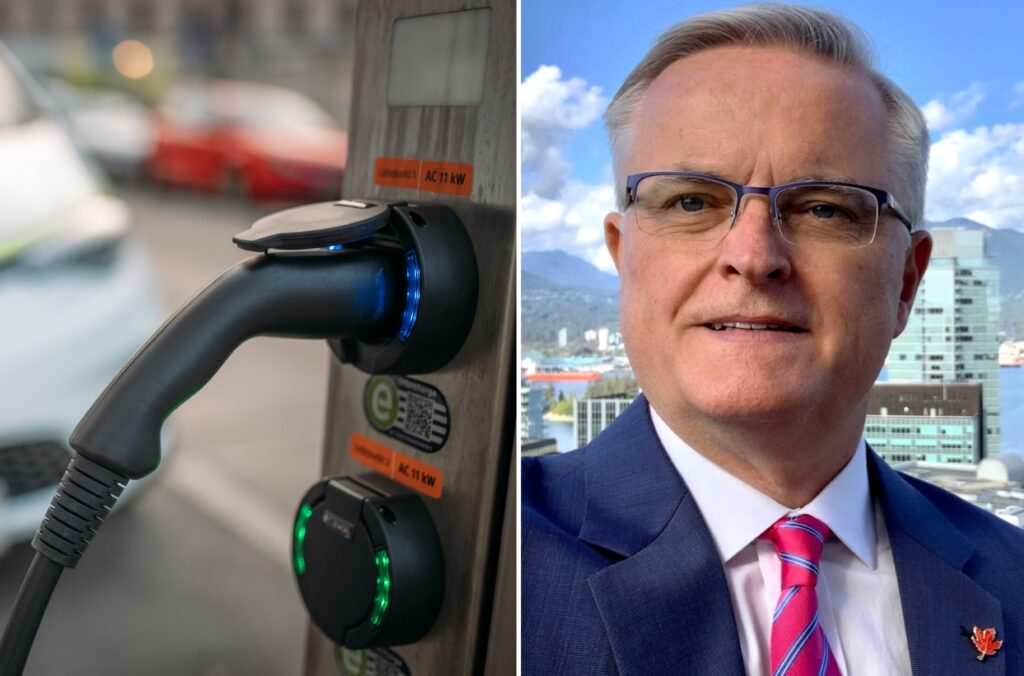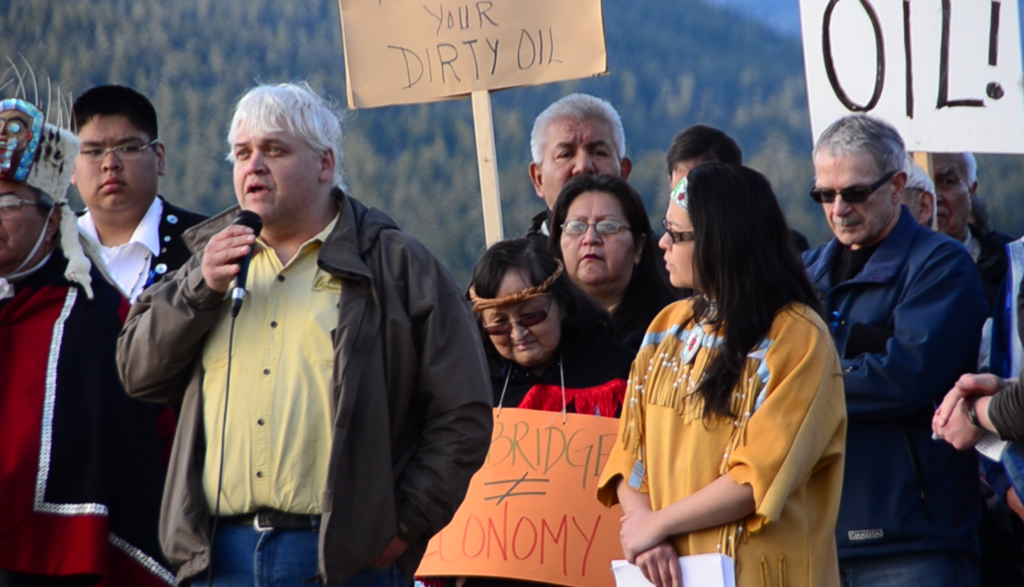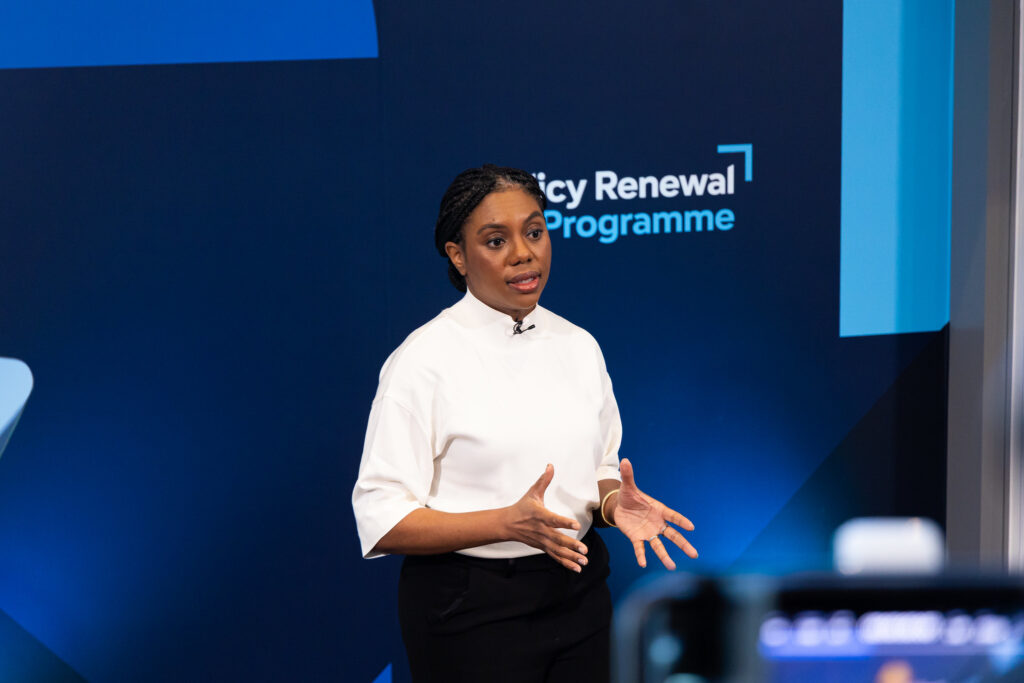By Paul D. Thacker
By the late 1970s, the petroleum industry had spent about two decades collecting information from their own scientists and outside experts and knew that burning fossil fuels would create catastrophic climate change. In the minds of the fossil fuel executives, this point must have been hammered home when federal scientists published a report on carbon dioxide and climate change in 1979. That report announced, “We now have incontrovertible evidence that the atmosphere is indeed changing and that we ourselves contribute to that change.”
And how were humans causing this change? “Man’s use of fossil fuels and exploitation of the land,” federal scientists concluded.
By 1980, industry published its first attempt at deceiving the public on what it knew about greenhouse gases — a booklet that downplayed climate change’s dangers and argued that scientists were divided on the research. Throughout the ‘80s, fossil fuel companies began accumulating more evidence that climate change was going to be a disaster in the future and that governments were going to start regulating their industry. Records show that they began to plot ways to deceive the public and undermine policies, and in 1989 they created a coalition of American companies to fight policies and deny that climate change was real.
Stanford science historian Ben Franta and I continue our discussion of these key documents, what they say, how they were found, and what this means for the fossil fuel industry. This conversation is part two in our series and has been edited and condensed for clarity. Catch up on part one.
Document 7: 1981
Exxon completes an “Atmospheric CO2 Scoping Study,” which concludes that reducing fossil fuel use through efficiency and renewable energy is the only foreseeable option. Carbon capture is technically possible but not economic. And the company was monitoring all scientific research and policy activities, through a single collection point. Legislation to reduce fossil fuel use was predicted by the late 1980s.
THACKER: What I love about this document is that you can see they’re kind of getting concerned. Exxon isn’t interested in looking at a study here, a study there. They create a central intake point for scientific information and they start monitoring any policies that might limit fossil fuels.
FRANTA: They’re keeping an eye on everything. They knew that people were going to start trying to control fossil fuel use, and they expected some type of legislation in another eight or nine years. So they had to get ready.
And they talk about solutions like carbon capture, which shows this was an established technology. Carbon capture is not a new technology, it’s an old technology. The simple fact was, even then, it was just too expensive compared to renewables.
THACKER: It cost too damn much. HuffPost just had this really great story about a huge disaster where this carbon capture pipeline burst and almost killed people down in Mississippi. And today, you hear all this talk, “carbon capture, carbon capture.”
But four decades ago, industry knew it made no financial sense.
FRANTA: Economically, it didn’t work compared to renewables. And renewables are now so much cheaper, so the economic argument against carbon capture is even stronger today.
I see Exxon’s ads about carbon capture all the time on Twitter. I’m thinking, “You had 40 years to make it work and you didn’t. You had your chance.”
This document puts all of today’s carbon capture rhetoric from the fossil fuel industry into context.
THACKER: You know it’s bullshit, because 40 years ago, Exxon called bullshit on carbon capture.
FRANTA: They’ve had so much money and so many resources for decades. With all their vast research budgets, and the very existence of the entire industry at stake, they couldn’t make carbon capture work. It makes you question if it’s economically viable in any scenario.
Document 8: 1981
Exxon’s Manager of Strategic Planning and Programs, Roger Cohen, reviews the company’s long-term plans until 2030 and reports that it is “distinctly possible” that they will “indeed be catastrophic (at least for a substantial fraction of the earth’s population).”
THACKER: Exxon’s Roger Cohen reviews the company’s long-term plans and reports that climate change might be catastrophic in 2030, or at least for a substantial fraction of the population. I like how it’s super nuanced, “I’m not saying for everyone it’s going to be catastrophic, but some people on planet Earth …”
FRANTA: Remember all the Cold War planners who were like, “If we have a limited nuclear war, then only several million people will die.” They saw this as one acceptable scenario. And today we think that’s absurd, right?
Exxon is doing something similar here. They’re like, “If we keep going the way we are, then it’ll be catastrophic for some people in the world.” The difference between the generals in the Pentagon and the executives at Exxon is that Exxon went ahead and executed on this catastrophic plan.
THACKER: At this time, Roger Cohen is obviously this major player inside Exxon. So what does Cohen do? He leaves Exxon and joins the George Marshall Institute, one of the more notorious climate denial groups.
Twenty-five years after he wrote that memo for Exxon warning about possible catastrophic problems from climate change, Cohen writes in 2008: “At this point there is little doubt that the IPCC position is seriously flawed in its central position that humanity is responsible for most of the observed warming of the last third of the 20th century, and in its projections for effects in the 21st century.”
He wrote this essay for another climate denial group — the Science and Public Policy Institute.
FRANTA: God, that’s amazing. I didn’t even know that.
Document 9: 1982
Exxon completes a comprehensive, 40-page briefing on the greenhouse effect. The cover letter explained that “The material has been given wide circulation to Exxon management and is intended to familiarize Exxon personnel with the subject. … However, it should be restricted to Exxon personnel and not distributed externally.” The report predicts with high precision and accuracy CO2 accumulation and global warming through the 21st century, with around 1°C warming by 2020 and 3°C warming by 2100.
THACKER: I like how Exxon slapped a cover page on their 40-page briefing on the greenhouse effect that said everyone in Exxon should read it, but don’t distribute externally. “Hey guys, close hold!” What’s in this 1982 document they don’t want people to know about?
FRANTA: It has all sorts of predictions for the future, sometimes really specific impacts. In one figure, Exxon predicts exactly how much fossil fuel will be produced in the future, and how much global warming that’s going to cause. They predicted this to a tenth of a degree, and it’s turned out to be incredibly accurate. It’s actually true to life.
We’ve actually been living this. For the last 40 years, we’ve been traveling up this curve of global warming that Exxon knew would happen from this one figure.
THACKER: And it’s another example of Exxon using models, because we know models work. You’ve written about climate change and then Exxon has attacked you, sometimes for writing about their own documents, right?
FRANTA: Exxon uses front groups. One of them is called “Energy in Depth.” Whenever I give a talk at an academic conference, they apparently watch it or find recordings. Or if I write a paper, then they write hit pieces about me, right? They want to identify anyone who’s a threat to the oil industry and try to smear or discredit them.
THACKER: I just want to make sure that you weren’t secretly involved in writing Exxon’s report that predicted how bad climate change would be from burning fossil fuels. How old were you in 1982?
FRANTA: I was minus four years old.
THACKER: So you weren’t even born in 1982.
FRANTA: I had very little influence at Exxon in 1982, verging on none.
Document 10: 1988
Internal Shell study titled, “The Greenhouse Effect”. Shell held an internal five-year-long study of climate change from 1981 to 1986. This 1988 document is a 90-page internal report on that committee’s work. The report predicts that global warming could lead to changes “the greatest in recorded history,” imposing “costly” adaptations and a slew of damages, including “destructive floods,” abandonment of entire countries, and forced migration. The report warns against inaction and states “…by the time the global warming becomes detectable it could be too late to take effective countermeasures to reduce the effects or even to stabilize the situation.”
THACKER: It’s great to look at an internal Shell document because some people will think we’re mean to focus on Exxon. But there happens to be quite a few oil and gas companies, which is why we call it an industry. First off, I love that this document is stamped “CONFIDENTIAL.”
When I get a bunch of documents, the first thing I look for is “confidential.”
FRANTA: This Shell report is equivalent to Exxon’s report on climate change. It’s almost 100 pages long and goes into the whole science of global warming. But it also talks about all the impacts: flooding around the world and big economic damages. And they discuss how global warming is going to transform the world. It even says, “The changes may be the greatest in recorded history.”
THACKER: Destructive floods. It’s the Old Testament and Noah, with the abandonment of entire countries. Forced migration.
FRANTA: It’s Biblical. Just imagine saying, “Bangladesh might have to be completely abandoned, but it’s worth it. We like selling oil.”
And it says by the time we can detect global warming, then it’s going to be too late to stop it.
THACKER: By “detect” do you think they’re talking about when scientists can see it. Or is it when some soccer mom goes, “Jesus Christ! All this damn global warming is causing these thunderstorms and tearing up the soccer fields. How’s my kid gonna win a trophy?”
FRANTA: Global warming is pretty much pretty detectable these days by your average person. So many weird weather patterns that nobody remembers ever happening before. But already in the ‘90s, it was detectable by scientists.
They started this study in ‘81, but published it internally in ‘88. So Shell knew what was going to happen in the early ‘80s, before scientists were detecting climate change.
Document 11: 1989
Exxon’s manager of science and strategy, Duane Levine, gives a presentation to the company’s board of directors, titled, “Potential Enhanced Greenhouse Gas Effects: Status and Outlook,” warning that governments around the world would soon restrict and replace fossil fuels the way they were then doing with chlorofluorocarbons (CFCs) to protect the ozone layer. Levine recommended a strategy of emphasizing scientific uncertainty, the costs of climate action, and deflections that included energy efficiency, reforestation, and natural gas.
THACKER: We’re back to our favorite: Exxon. Duane Levine gives a presentation to the company’s board of directors where he’s comparing what governments did with these chemicals called CFCs that were destroying the ozone layer, with what might happen to fossil fuels when governments start to focus on climate change.
He’s like, “Hey guys, the Vienna Protocol and Montreal Protocol destroyed the market for CFCs. Guess what’s gonna happen to us?” This is a point where we stop discussing wonky science and move into the politics. The gloves are coming off.
FRANTA: Absolutely. This is one of the most important master strategy documents we’ve found so far. Duane Levine’s high up in Exxon. He’s like, “Remember that whole ozone layer thing, and then governments got together to get rid of these chemicals? Well, the same thing is happening with climate change, and countries are starting to get together. We need a strategy for delaying this whole process and shutting it down.”
What’s crazy is that this strategy is basically the same stuff that we see today.
THACKER: I wrote an obituary for Fred Singer. When I first ran across him in the mid-2000s, I knew him as one of the famous climate denialists who reporters would quote. I didn’t even know until later he had done ozone hole denial.
FRANTA: They were recycling scientists. And Fred Singer was part of the strategy that emphasized scientific uncertainty.
Climate denial since the ‘90s has emphasized the cost of climate action. That’s all of those economists that the oil industry hired to say that climate policies were too expensive. And there’s the “Oh, we need to use more natural gas.” That’s still going on. Then there’s really diabolical stuff, “Hey, we should support reforestation.”
THACKER: Plant a tree to save the planet. Anything that keeps the focus off “Stop drilling for oil.”
FRANTA: Reforestation is good. But here it’s being used as a distraction technique, as a deflection. Not dissimilar to the way “carbon offsets” are used today. They understood all of this back in ‘89, and they went ahead and implemented it. Emphasizing scientific uncertainty doesn’t work as well anymore. But all the other prongs are pretty much going strong.
THACKER: The natural gas thing has been a big part of the Breakthrough Institute, with Ted Nordhaus and Michael Shellenberger. But ExxonMobil saw natural gas as a bullshit distraction technique back when Nordhaus and Shellenberger were teenagers in ‘89.
FRANTA: These are long running, macro strategies, and I think sometimes people fall into them. Who can argue with energy efficiency, for example? We’ve recently learned through new research that Exxon shared this strategy with oil companies all around the world. It looks like they acted as a ringleader in, essentially, an international conspiracy to deceive the public about climate change and fossil fuels. It’s truly incredible.
THACKER: Duane Levine, who puts all this together, is a revered chemical engineer. There’s apparently a lab at Johns Hopkins Engineering School named after him.
FRANTA: Part of the story is how these people are lauded and praised in professional circles. But actually, they were architects of global catastrophe.
Document 12: 1989
The fossil fuel industry forms the Global Climate Coalition, which promotes the same talking points envisioned by Levine at Exxon. The membership list includes a huge swath of the U.S. economy, including companies in oil and gas, coal, petrochemicals, rail, and other sectors.
THACKER: In 1988, we have this really hot summer, and climate scientist Jim Hansen gives this famous, televised testimony before Congress about climate change. And that’s when the fossil fuel industry starts the Global Climate Coalition.
This document comes from the basement files of Nicky Sundt, who I’ve known for like 15 years. She had all these documents filed in boxes, down in her basement on Capitol Hill. This is like a mile from API’s headquarters. API is sending their lobbyists running all around Washington, D.C., to control the message and it’s like, “Hey, guys, did you think to check out Nicky Sundt’s basement?”
FRANTA: These are the stories that make you wonder what else is out there. Who has papers in the attic? Many more documents could be out there.
THACKER: This doesn’t show anything nefarious. It’s just members of the first coalition to stop climate legislation, but they’re not all fossil fuel companies.
When you back up to the 1950s, you see fossil fuel companies learning about climate change. Then we see them gathering more information during the ‘60s and ‘70s and realizing the greenhouse effect is going to be bad. By 1980, they’re taking their first tentative steps at fooling the public, and throughout the ‘80s they’re figuring out that climate change will eventually be catastrophic, governments are going to regulate, and they start designing strategies to derail that.
Then, WHAM! Corporate America jumps up to attack any climate policies. Because this isn’t just fossil fuel companies.
FRANTA: They’re not all fossil fuel companies, but most of them are close to fossil fuels in some way: power companies, automobile makers. You got the petrochemical companies like the Chemical Manufacturers Association.
THACKER: Maytag? They make refrigerators and washers.
FRANTA: IBM is on here. The broad elements of the fossil fuel industry and some other mobilized against climate action. The Global Climate Coalition was one of the main organizations to promote climate denial over and over, saying, “Fossil fuels don’t cause global warming.” And they were lobbying against everything.
This is a list of the first people and groups involved with organized climate denial. That means they were all privy to internal strategizing, goals, and activities. What documents do they have?
THACKER: These are the 12 documents that you picked, because they tell a story. But someone else could pick 12 others.
FRANTA: There’s over a thousand internal and other relevant documents already posted online and that is likely the tip of the iceberg. We could make a list of the top 20, the top 200. There’s a lot of information out there.
THACKER: But if you pick a different set, what do they tell you?
FRANTA: It shows that they knew that they were going to cause a global catastrophe if they continued business as usual. And they went ahead and did it anyway. And then they lied to the public about it, and they blocked people who tried to stop the catastrophe from happening.
But now we have this knowledge. We know that they knew how deeply they lied, and how sophisticated they were in tricking the public. So it’s time for accountability, and the question is, “How are we going to stop these deceptions and hold these companies accountable?”
Bonus: A Baker’s Dozen
Like we said, there are thousands of documents out there. Here’s a bonus document uncovered by DeSmog in 2016.
1980: Exxon’s Canadian Subsidiary Imperial Oil Limited sends a “Review of Environmental Protection Activities for 1978-1979” to Exxon management. The document is marked “Proprietary to Imperial Oil and Affiliates.” One passage reads, “There is no doubt that increases in fossil fuel usage and decreases of forest cover are aggravating the potential problem of increased CO2 in the atmosphere. Technology exists to remove CO2 from stack gases but removal of only 50% of the CO2 would double the cost of power generation.”
This ends part two of our two-part look at the ‘Dirty Dozen of Big Oil’s Secret Climate Knowledge.’ Read part one.
This interview has been co-published by DeSmog and The DisInformation Chronicle.
Paul D. Thacker is an investigative journalist with over 15 years uncovering campaigns to distort science. He has written on scientific ethics for outlets including the New York Times, JAMA, Washington Post, The BMJ, HuffPost, NEJM, and Los Angeles Times. He now runs The DisInformation Chronicle. While serving as an investigator in the U.S. Senate, he helped to pass the Physician Payments Sunshine Act and ethics reforms at the National Institutes of Health.
Subscribe to our newsletter
Stay up to date with DeSmog news and alerts







